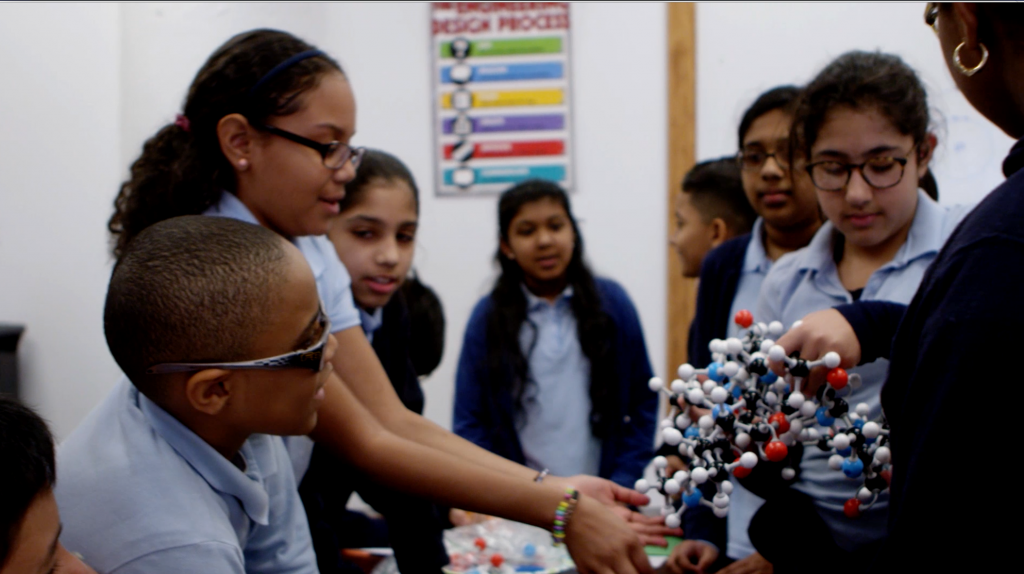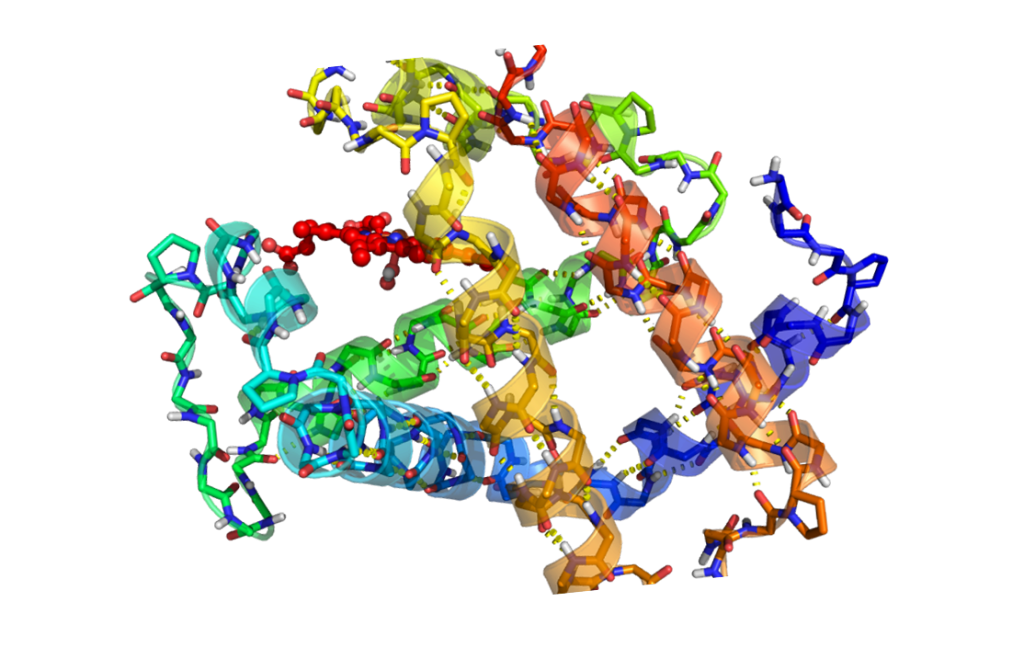Daniel Fried, Ph.D., assistant professor of chemistry at Saint Peter’s University, has developed a new vision for teaching STEM to children. The program, Biochemistry Literacy for Kids, uses a unique style and a custom curriculum to make advanced concepts in science accessible and rewarding for children. A documentary was produced from footage of a recently taught flagship course at Jersey City Public School 30. View the video here.
 Q. Tell me a little about yourself and what piqued your interest in creating this curriculum.
Q. Tell me a little about yourself and what piqued your interest in creating this curriculum.
A. I had a rough time in high school chemistry. I had such a hard time that I went from wanting to be a doctor to attending undergraduate school as a music ed major. I was at Temple University when I was introduced to the Gordon Method of teaching music. This unique approach involves exposing learners to a wide range of modes of music and a rich variety of stimuli. The method focused on the term “audiating” or internalizing the music instead of memorizing. The concepts from this method continued to influence me even as I decided to change my major to biochemistry after seeing a poster of a proton crystal structure. I went on to earn my Ph.D. from Yale University in protein engineering. I became a professor because I thought I could bring unique perspectives to science education. I wanted to solve some of the problems I struggled with in school. I started running experimental classes to learn about how I teach and how people learn.
Q. What is Biochemistry Literacy for Kids?
A. Biochemistry is the study of what we are made of physically. The amount of knowledge we have about the topic has grown exponentially in recent years. It is an easy topic to teach because it is personal and it applies to everyone, for example, the exploration of why we need oxygen.
the exploration of why we need oxygen.
In addition, it is a visual topic. With the models, students can visually see how the atoms come together to form these machines that work inside of us. We explore things such as eyesight and metabolism. When I was a kid, I wanted answers; this is why I developed a way to teach college-level science to kids. I knew it was possible because K-12 kids come to school with questions they need and want answered. I make the curriculum how I want it to be and the kids like it.
Q. How do you teach this concept to children?
A. The approach to teaching is completely interactive. It gives the students a chance to understand how atoms are connected to each other through hands-on modeling. I also use a computer program that can show crystal structures that are too large to build. The computer images are 3D and they are able to zoom in and explore the structures more closely. I also use a personal touch with a huge repertoire of visualizations and presentations. The visualizations are extremely well animated and made to be engaging with an emphasis on learning. Essentially, they are made to be better than a textbook. The visualizations spell out the lesson and make it easy for the students to learn.
Q. In the documentary you describe a technique where children progress from drawing rudimentary stick figures to stunning figure sketches. Can you describe how this is possible and how it applies to biochemistry?
A. The artist is Betty Edwards and she developed a theory and wrote a book called Drawing on the Right Side of the Brain, which involves decoupling the symbolic, or left brain, from the abstractive, or right brain, so the person draws what they see and not what they think. Science is all about observation and I think it has a close connection to art. I created a curriculum that features exercises for someone who doesn’t know anything about chemistry to quickly learn high-level concepts. My job is to find the exercises that result in rapid improvement. The program is not about going through a textbook and memorizing information.
 Q. Can you say a little more about your experience at Jersey City PS 30?
Q. Can you say a little more about your experience at Jersey City PS 30?
A. It was a six-week program for third, fourth and fifth graders. I came in for a period and taught STEM concepts. The discipline at this school was great and the kids are pretty serious, which allowed me to work well with them. When the kids are focused and listening, they can learn a lot. We made a video because it was a great showcase for the school and for my project. I am publishing a paper about what they learned.
Q. Where do you see the future of Biochemistry Literacy for Kids?
A. I have done a lot, including running a ton of programs and making a documentary. The next thing is that people have to find out about our work. If we can get some funding, we can invest in teacher training. Jersey City is interested in expanding and others have contacted me since the documentary about bringing the curriculum to their schools. I might be able to run some satellite programs. It would be nice to have more people involved.
Q. Any last thoughts?
A. Kids want to learn. They are not tired of learning. They haven’t had those bad learning experiences yet. The easy part is teaching the kids. They naturally want to learn and they are approaching the material with new eyes. I think kids have more potential than we realize.
To learn more about Biochemistry Literacy for Kids, click here. To watch the documentary, click here.
